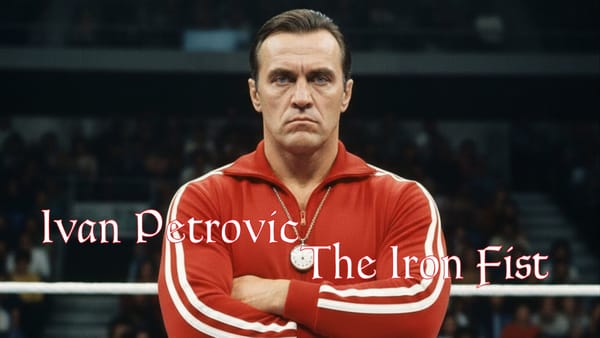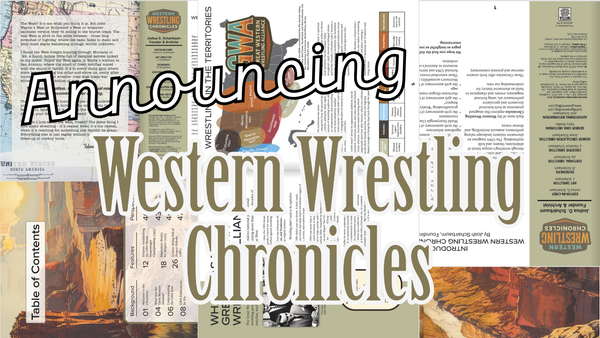Using AI for Creative Development: Building the GWA Character Matrix System
Every wrestling universe needs a beating heart. For the GWA, it's the Booker's Blueprint™️ - my systematic approach to transforming classic territory wrestling wisdom into a modern storytelling engine. Let me show you how it works.
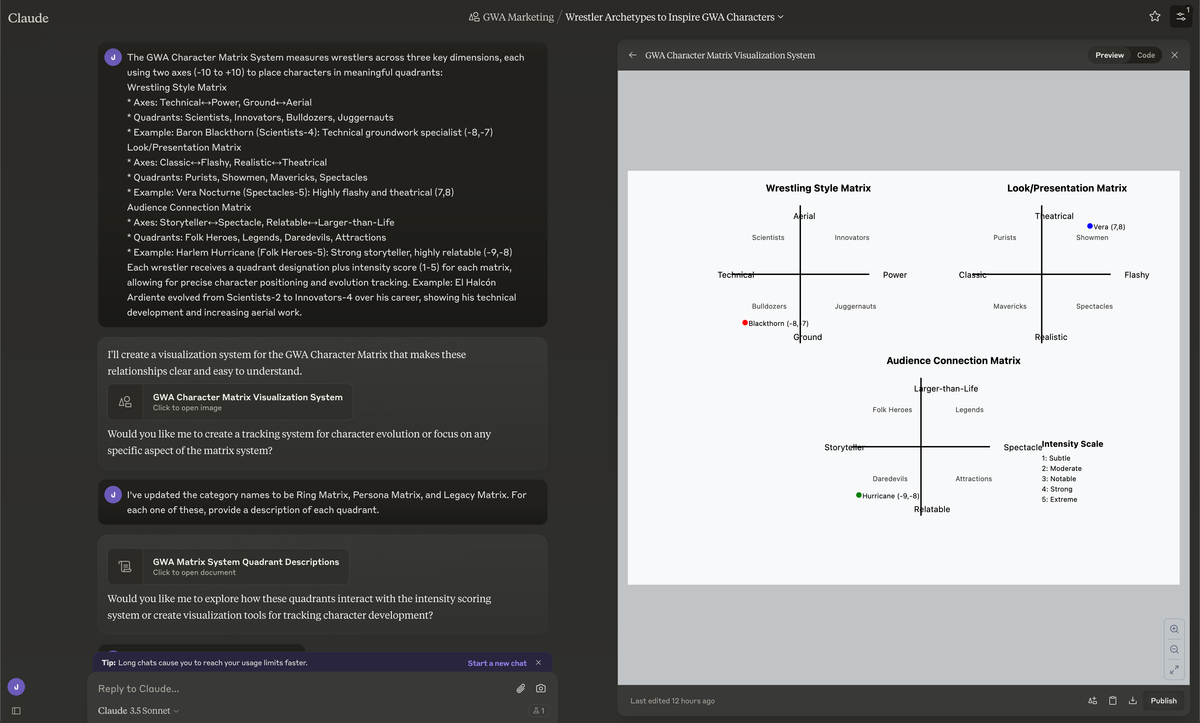
In a recent collaboration with AI (Claude), I developed a comprehensive system for analyzing professional wrestling characters that I'm pretty excited about. I wanted to share the creative process because it demonstrates how AI can be a powerful tool for iterative ideation and refinement.
Starting with a Simple Question
The project began with a basic question: what's the best way to plot wrestlers on two axes to understand their characters better? While this might seem straightforward, it led to a fascinating exploration of different measurement systems and visualization approaches.
GWA Character Matrix System™: Quick Overview
Every GWA wrestler is measured across three matrices, each revealing a different facet of their character:
The Ring Matrix™
How they fight
- Technical vs Power fighting style
- Ground vs Aerial movement
- Quadrants: Scientists, Innovators, Bulldozers, Juggernauts
Scientists | Innovators
(Technical/Ground)|(Technical/Aerial)
-----------------|------------------
(Power/Ground) | (Power/Aerial)
Bulldozers | Juggernauts
The Persona Compass™
How they present themselves
- Classic vs Flashy presentation
- Realistic vs Theatrical performance
- Quadrants: Purists, Showmen, Mavericks, Spectacles
Purists | Showmen
(Classic/Real) |(Classic/Theatre)
-----------------|------------------
(Flashy/Real) |(Flashy/Theatre)
Mavericks | Spectacles
The Legacy Grid™
How they connect with audiences
- Storyteller vs Spectacle focus
- Relatable vs Larger-than-Life presence
- Quadrants: Folk Heroes, Legends, Daredevils, Attractions
Folk Heroes | Legends
(Story/Relatable)|(Story/Larger)
-----------------|------------------
(Spectacle/Real) |(Spectacle/Larger)
Daredevils | Attractions
Measurement System
- Each axis ranges from -10 to +10
- Distance from center indicates intensity (1-5 scale)
- Position determines quadrant placement
Example: Baron BlackthornRing Matrix™: Scientists-4 (-8, -7)
Persona Compass™: Purists-5 (-9, -8)
Legacy Grid™: Legends-4 (-8, +8)
This shows Blackthorn as a technical ground wrestler with traditional presentation who tells larger-than-life stories.
The Power of Iterative Refinement
What made this process particularly effective was the ability to rapidly iterate on ideas. As we explored different axis combinations, the AI helped generate and evaluate multiple options. We considered everything from Ring Psychology (Storyteller vs. Spectacle) to Audience Connection (Popular vs. Polarizing).
The breakthrough came when we realized we needed multiple matrices to capture different aspects of a wrestler's character. This led to developing three distinct measurement systems:
The Ring Matrix™
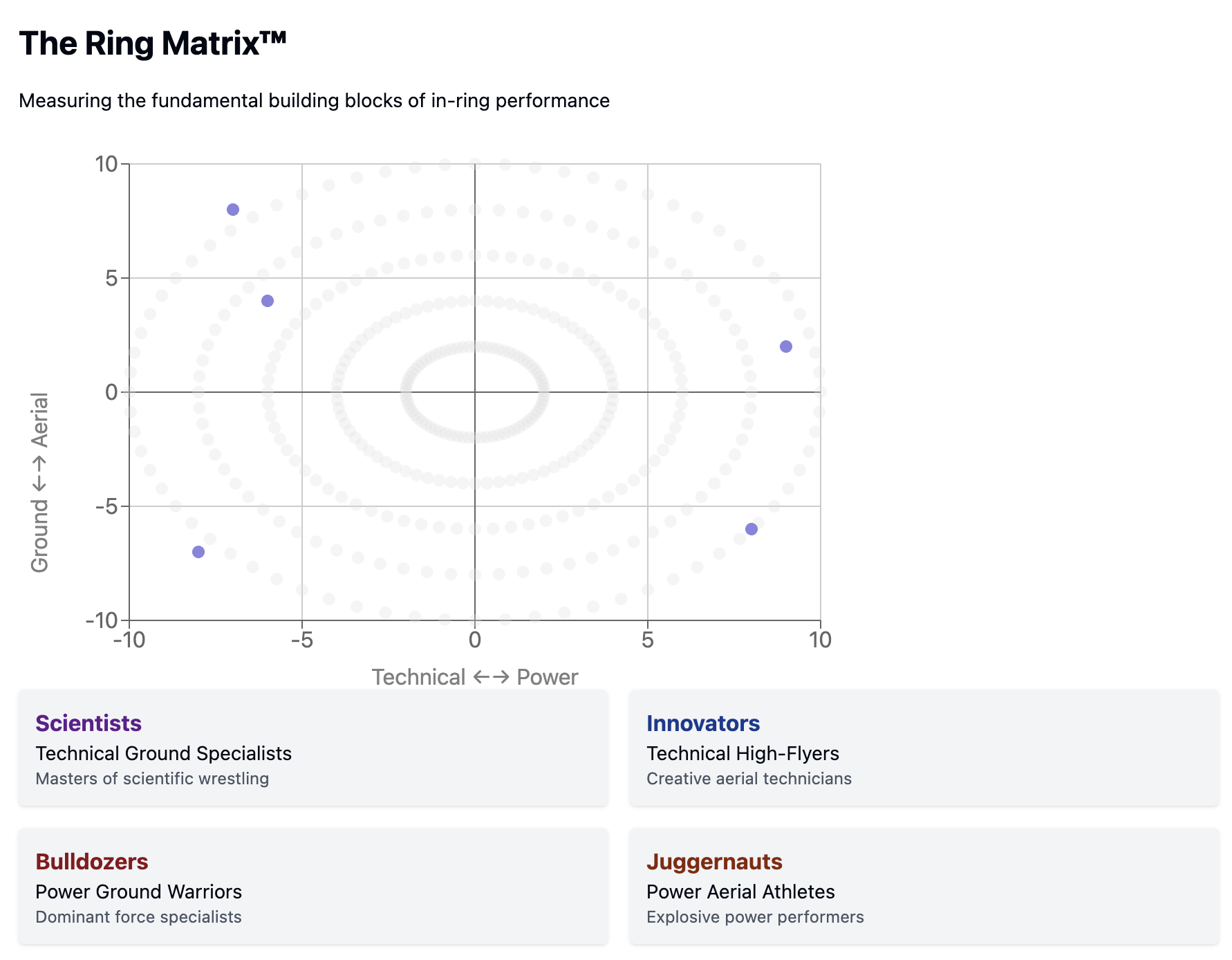
The Persona Compass™
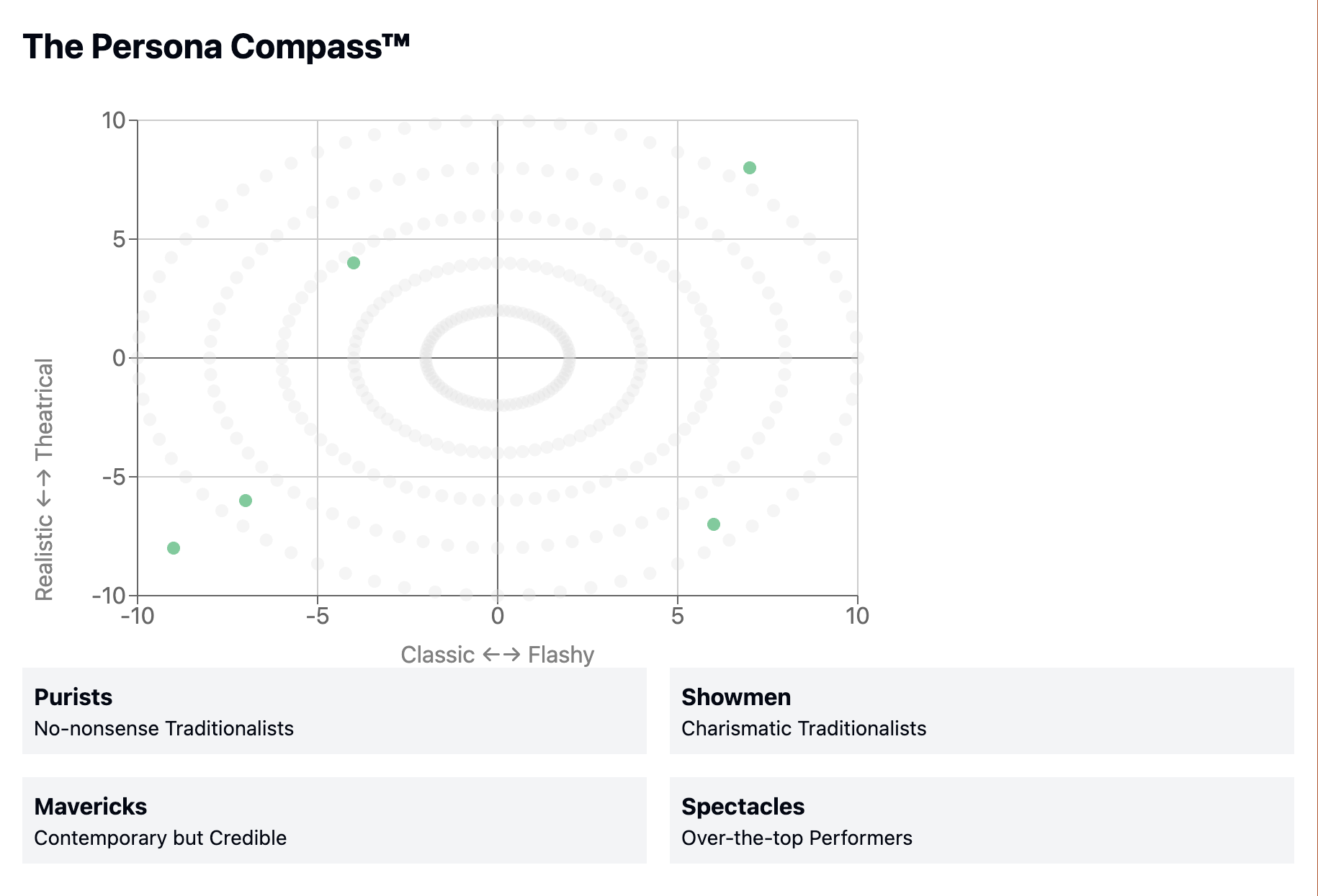
The Legacy Grid™
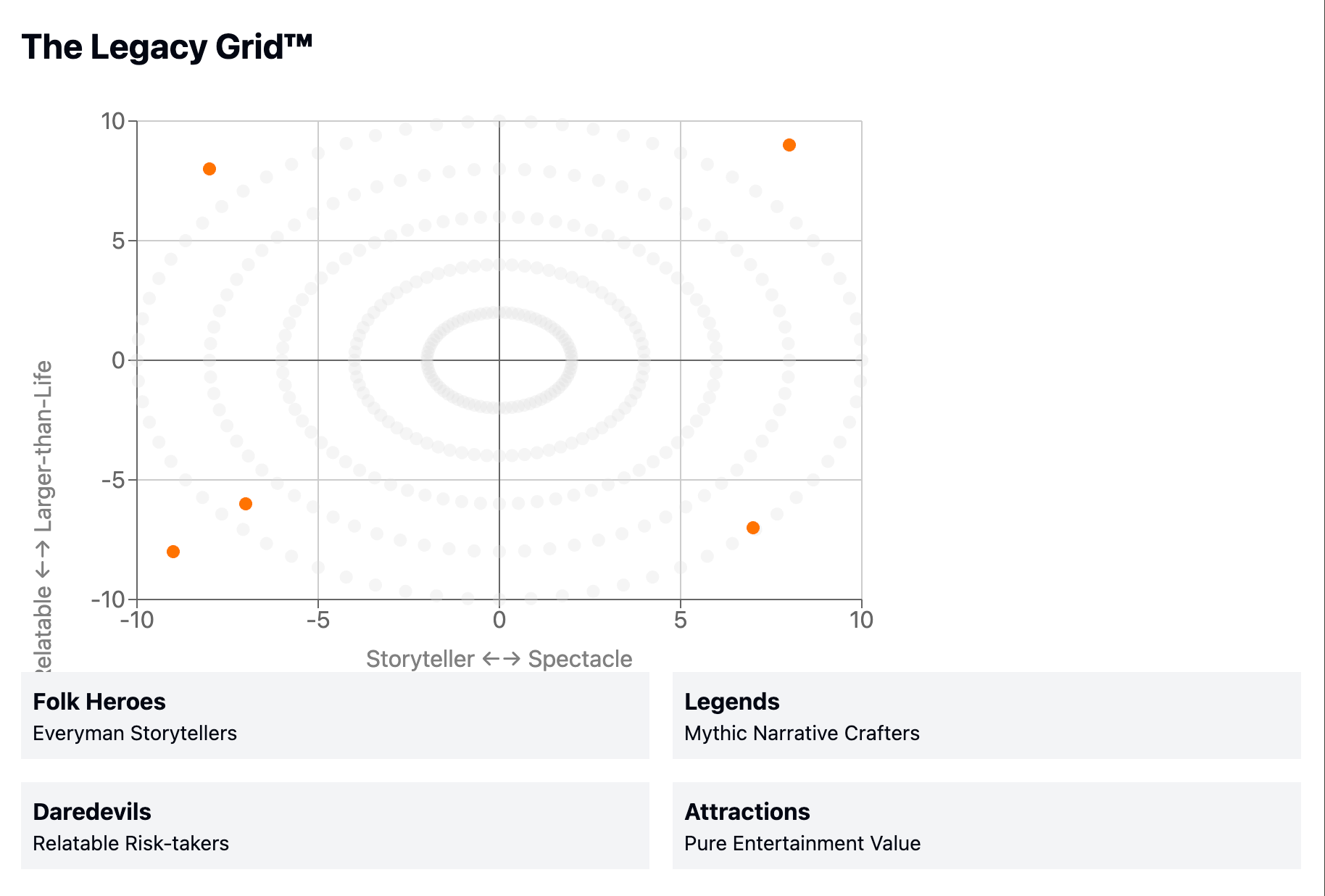
The Naming Process
One particularly interesting aspect was the evolution of the names. We started with functional descriptions like "Wrestling Style Matrix" and "Look/Presentation Matrix," but these felt too clinical. Through iteration, we developed more evocative names that better captured the essence of each measurement system while maintaining their professional feel.
Visual Development
The project wasn't just about concepts - we also developed detailed visualizations using React and Recharts. The AI helped create interactive charts that plot wrestlers on each matrix, complete with intensity rings showing how strongly a character embodies their quadrant's traits.
Key Lessons for Using AI in Creative Development
- Start Broad, Refine Gradually: Begin with open-ended questions and let the AI help you explore possibilities before narrowing down.
- Use AI as a Sounding Board: The AI can quickly generate alternatives and help you evaluate different approaches. Don't be afraid to reject suggestions that don't fit your vision.
- Iterate on Names and Language: Sometimes the technical name isn't the best name. Use the AI to explore more engaging alternatives while maintaining professional credibility.
- Build on Previous Ideas: Let each iteration inform the next. The final three-matrix system emerged from exploring the limitations of single-matrix approaches.
- Combine Technical and Creative Elements: The project succeeded by balancing precise technical measurements with engaging presentation and clear explanations.
The Result
The final system provides a rich framework for analyzing wrestling characters across multiple dimensions while remaining accessible and engaging. Each matrix measures distinct aspects of a wrestler's character:
- Ring Matrix™: How they fight
- Persona Compass™: How they present themselves
- Legacy Grid™: How they connect with audiences
Each includes position measurements (quadrant placement) and intensity scores (distance from center), allowing for nuanced character analysis and development tracking.
Beyond Wrestling
While this system was developed for professional wrestling, the process demonstrates how AI can help develop complex analytical frameworks for any creative field. The key is to:
- Start with clear questions
- Iterate rapidly on ideas
- Refine language and presentation
- Develop supporting visualizations
- Document the system thoroughly
Looking Forward
This project shows how AI can be a powerful tool for creative development when used iteratively and thoughtfully. It's not about having the AI generate a complete solution, but rather about using it as a collaborative partner in exploring and refining ideas.
The resulting GWA Character Matrix System™ demonstrates how technical precision and creative presentation can come together to create something both useful and engaging. It's a testament to the potential of human-AI collaboration in creative development.
How have you used AI in your creative process? I'd love to hear about your experiences in the comments below.



